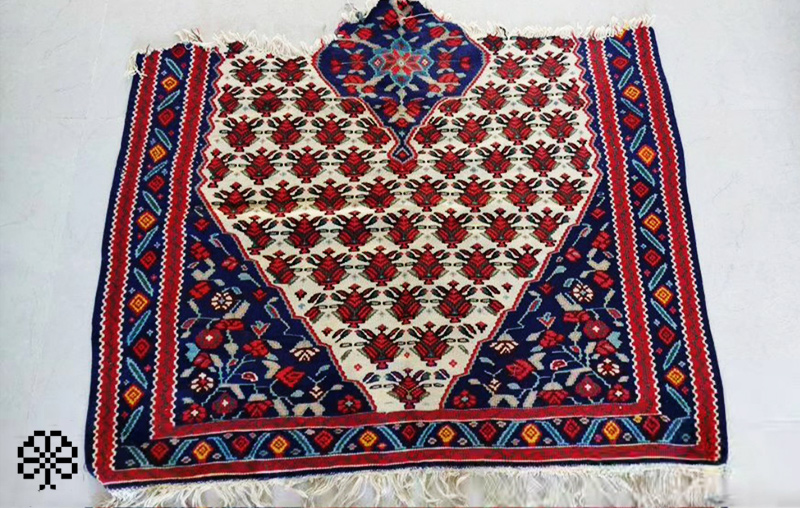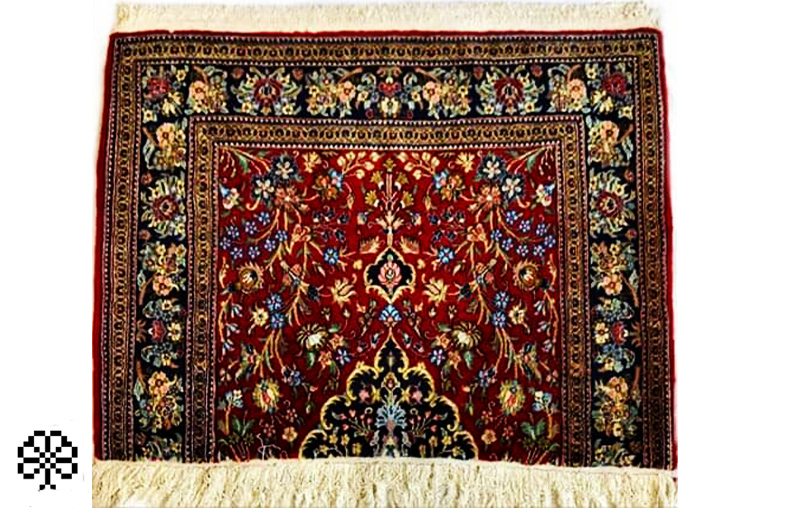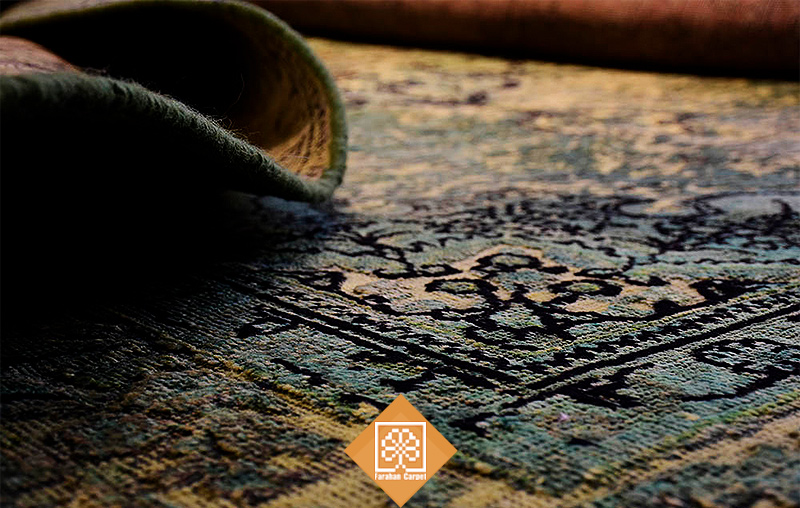What is a ghahri carpet or an unfinished handwoven carpet? “Carpet made of sadness!”

ghahri carpet is one of the almost unknown terms in the art of carpet weaving that many of us have probably never heard of. If we want to talk about this type of carpet in a simple way, it should be said that a hand-woven carpet that cannot reach the final stage and finish the work is called forced carpet.
In this article, we will examine the Farhan carpet in detail, and we will also provide explanations about its purchase value.
What is Qali Ghari?
If you look carefully at the picture above, you might wonder why this carpet is half woven and not fully woven?!
These types of hand-woven carpets are called Ghari rugs, which have a special story that we will explain to you in the following:
Since hand-woven carpets are woven by the hands of the weavers of our country, it is natural that their weaving time is very long, unlike machine-made carpets. This period of time depends on the size and number of rows of the carpet and other things, and for example, a 6-meter carpet with a 50 count takes more than a year to finish!
It is possible that during this period of several years or months of carpet weaving, a series of problems may arise for the carpet weaver that the weaver cannot finish the work of carpet weaving and has to leave it half-finished. Reasons such as illness, God forbid death of the weaver, boredom, dispute with the carpet investor, divorce, etc. are among the most important of these cases. Now you may have a question, what will happen to these carpets?
The first case is that another weaver accepts the continuation of the weaving of these carpets and completes the work of weaving it, which must be said, usually there is no weaver in the weaving of high quality carpets who accepts and finishes the work of another carpet artist. The reason is that many weavers believe that this is not ethical and many believe in the statement that “carpet is a living being and is not the result of the weaver’s passive effort, but is a part of the weaver’s soul”.
Because of this, in many cases, these carpets are left half-finished, or they are framed and sold in the same way, and they are called forced carpets or rugs. So, according to the explanation, you probably understood why the word “wrath” is used for these carpets.
It is necessary to mention this issue. In some cases, after some time passes, weavers come to finish these carpets, and after checking, they face problems, such as some colors of carpet yarn or cream are rare in the market. Or, after weaving a few times, they realize that one hand messes up the carpet, so they stop weaving it.
Read more: What is the finishing of a hand-woven carpet and how is it done?
Is Kahri carpet worth buying?
Before we want to talk about buying a carpet, let’s give an example; A 350-year-old Iranian carpet was sold in a big auction in America for 33 million dollars (1880 billion tomans with 57 tomans in dollars). The very high economic value of this carpet was due to the way of weaving and the designs and roles specific to the Safavid period. But maybe, according to many people, no carpet is worth buying 1880 billion tomans, but the high artistic and historical value of this carpet has made this carpet fetch this price.
This is also true for forced rugs, and many of us may think that a half-finished rug has no value, but those who are looking to buy these rugs are aware of its artistic value.
Suppose one of these carpets is woven by a kind elderly mother in one of the villages of our country, Iran, who unfortunately passed away while weaving this carpet, do you think this carpet is valuable or not?! This is also the reason why many people who intend to buy a forced carpet insist on knowing the reason why the carpet remains unfinished and they believe that “handwoven carpets are able to tell the story of a voluntary or inevitable failure.” They keep it in their hearts.”
So, in general, we must say that if you are looking for the art and artistic value of the carpet and you know it, buying these carpets is absolutely worth buying. Otherwise, because hand-woven carpets are woven in regular, geometric, and balanced designs, and the repetition of carpet patterns makes it easy to notice defects or partial texture, then logically, their value is lost.
In this article, we examined the hand-woven carpet, which perhaps many of us did not know and were not aware of the real value of the carpet. But we tried to do it by carefully examining it, so that from now on, by observing them, we will understand their real value and not look at them only as a piece of useless carpet!
If you have any questions or problems regarding the said content and explanations, you can share it with us in the comments section.




